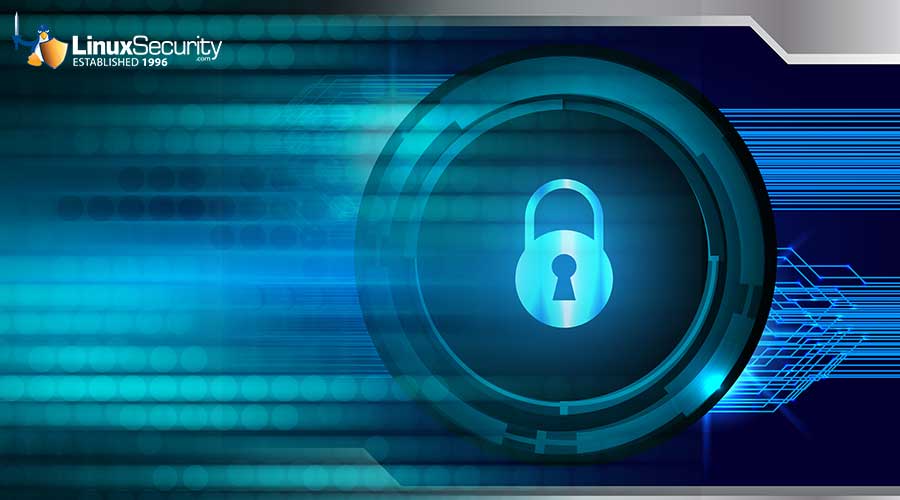Software Review: Arkeia Backup
|
Introduction
Knox Software, Inc. of Burlingame California has an excellent client/server backup product called Arkeia. Is was released in two versions, the professional version, and the free. Both can be downloaded from Arkeia's website: . It was designed to serve as a backup solution for administrators who have to manage large-scale networks that consist of many platforms. It can backup any Linux or Windows based server or client onto a single centralized server. This enables an administrator to more efficiently manage/schedule backups, data archival, and system recovery.
|
|
|
| The free version of Arkeia is fully enabled for Linux. It can be used for both commercial or personal use. The free version provides interactive and periodic backup, the use of one Linux backup server, two client machines, a single SCSI tape drive, and no time restriction. | The standard professional version provides everything the free version does with an additional 10 client computers on a network, 30 client hardware/OS configurations, and nine server hardware/OS configurations. Arkeia can be scaled for any network size. |
Over the past five years the Internet and private networks have grown exponentially. Tools such as dump, tar, and cpio are becoming increasing less efficient to use because administrators are having to alter scripts to keep up with their evolving network. Although in many situations scripts work great, Arkeia can handle many unique situations helping administrators work more efficiently. Why spend hours scripting, testing, scripting, testing, when backups can be scheduled with Arkeia in minutes. Judging from past experience, Arkeia ranks at the top of my list for Linux network based backup solutions. Backups are an essential part of security; they must be taken seriously.
System Requirements
32 MB RAM
a SCSI card (Adaptec AH2940 recommended)
Supported tape drive
a 486 or Pentium-class processor
1 GB hard disk or up
a Linux V 2.0 or later, TCP/IP services presentWe used: a Guardian Digital Linux Lockbox 2200
Dual PIII 866Mhz, 512Mb Ram, 70G RAID 5 in 4 x 18G SCSI hot-swap disks.Tape Backup: VXA rakPak 1U rackmount backup device with 2 x 66G backup drives.
Supported Operating Systems:
BSD, Compag / Digital, FreeBSD, HPUX, Linux, Microsoft, Novell, SCO, Silicon Graphics, SUN Systems, Unixware, AIX 3.2 RS6000, AIX 4.x RS6000, BSD 3.0 (intel), BSD 4.0 (intel), DGUX 4 AViiON, Digital Unix OSF/1 3.2, Compaq Tru64 UNIX, ICL DRS/NX (intel), ICL DRS/NX (sparc), freeBSD 2.2.6 (intel), freeBSD 3.2 (intel), freeBSD 4.0 (intel), HP-UX v10.x, v11.x , HP-UX v9.x, Linux (alpha), Linux ARM
At our request, Ecrix sent us a VXA rakPak, a 1U rackmount backup device with two 66G backup drives. We thank Ecrix for their support by giving us the opportunity to evaluate Arkeia using their backup hardware.
I have been searching for a reliable, cost effective, and fast backup solution. The Ecrix drive boasts "66 Gigs on a tape" with up to 6MB/sec making it one of the best that I have seen. On the Ecrix website, it outlines extreme scenarios that show how reliable the system can be. It outlines accounts where the drive correctly restored tapes that have been boiled, frozen, and dunked in coffee. Impressive!
If you built your kernel with SCSI tape support, your job is done . Address it like any other SCSI tape drive and setup will be complete.
[ben@backup scsi]$ cat /proc/scsi/scsi Attached devices: Host: scsi0 Channel: 00 Id: 10 Lun: 00 Vendor: ECRIX Model: VXA-1 Rev: 2524 Type: Sequential-Access ANSI SCSI revision: 02 Host: scsi0 Channel: 00 Id: 11 Lun: 00 Vendor: ECRIX Model: VXA-1 Rev: 2524 Type: Sequential-Access ANSI SCSI revision: 02 Host: scsi2 Channel: 01 Id: 00 Lun: 00 Vendor: MegaRAID Model: LD0 RAID5 52500R Rev: H795 Type: Direct-Access ANSI SCSI revision: 02If you're in the market for an innovative backup solution, check out the Ecrix's rakPAK. It combines two of the award winning VXA tape drives in a 1U rack-mountable solution. Larger solutions are available. The Ecrix drive and Arkeia seem to be a perfect match because of their Linux support and expeditious performance.
Installation
At times, installation can be tricky. It is recommended that you are familiar with all documentation before starting. It is best to install the client(s), GUI, and then server. Installing on a "clean system" is helpful. The installation process is straight forward. Download the appropriate packages from Arkeia, (either tar.gz, or RPM) and install as normal. The tar.gz format contains standard installation scripts while the RPM format can be installed with a simple rpm -Uvh. If you are using a highly modified Linux system you may have a little trouble, but installation isn't impossible.
At first, basic configuration can be somewhat of a daunting task. Because Arkeia was clearly designed to be an enterprise solution, set aside ample time to organize your network's backup routine. It is in your best interest to be familiar with terms such as savepack, drivepack, and pool before beginning. The documentation is helpful here.
Note: Each tape in the backup system must be defined. The tapes are grouped into tape pools. Savepacks are the selected network computers and directories to be backed up. Multiple savepacks can be defined and saved to different pools. In the beginning this may be confusing. Over time this concept has proved to be logical and efficient. Hang in there!
When installed, Arkeia creates the directory /usr/knox. This is used to keep a database of backed up files for each system. This database consists of a directory tree structure which contains images of what has been backed up. If the system to be backed up contains many directories it tends to eat up filesystem inodes. If you are in a situation where your server stores large amounts of data, it is probably best to implement the Reisor FS. Also, it is a good idea to make a separate tape dump of /usr/knox after each backup in order to obtain high restore speeds. Without that, you'll have to use tools such as readarkeia and arkrstb which are slow.
Usage/Features
After installation, you should have no problems configuring a backup procedure. Knox Software, Inc. has does a great job creating an easy-to-use, user friendly graphical user interface. The GUI can be accessed and managed from many platforms because it was written in Java. It consists of text menus, buttons, text fields, and check boxes. Each window provides a help button to assist users with the appropriate functions. If you are already familiar with other backup packages you will feel right at home.
Backups can be scheduled as either periodic or interactive. An interactive backup is useful when wanting to create a backup manually and monitor the status throughout the entire process. Periodic backups used when automation is necessary. You will have to option to execute a full backup, or one of the two types of incremental backups.
....
Feature Highlight:
|
|
Many other features are included. A complete list can be found funct full.
Combined with a Guardian Digital Linux Lockbox 2200, and a VXA rakPak, Arkeia works at amazing speeds. Knox Software claims that Arkeia delivers speeds that are up to 200-300% faster than rival software. I can not confirm this. However, it did push the network to its fullest potential.
"In the case of network and system errors, Arkeia is designed to restart, recover and survive. Arkeia's systems management facility allows prioritization of other processing activities while a backup is in progress and leverages standard TCP/IP protocol to intelligently monitor network errors. Should a network error occur restarts the backup procedure from the point of interruption."
Security
Arkeia is required to be run as root. It maintains an access control list to keep track of usernames and passwords for each client and server. If the authentication information is invalid Arkeia will deny access. Various roles can also be defined in the userlist. Users can be created to allow full administration, backup only, restore only, or any combination. Operation controls can be added for each user/client.
One aspect that I was not completely happy about was the default user. On the server end the default administrative user was "root" with an EMPTY password. I understand that Arkeia did this to reduce support overhead, but many people simply leave it that way, not necessarily understanding the implications. On the client side, the default username was "Administrator." This required a manual change each time the software was used. I recommend that you change the default password as soon as you install the software. Anything is better than being empty.
Also, I do not see any reason why someone could be stopped from bruteforcing the password. The reporting on this aspect is lacking and could easily go unnoticed.
Blowfish and DES encryption types can be used to encrypt the data from the client before it is sent to the server. This is only available with the professional version and not the freely-available version.
Support
When I have problems with hardware or software I turn straight to documentation. Often its faster to look something up rather than bother someone else. Unfortunately, Arkeia's documentation needs improvement. Many of the topics covered in the manuals are not completely explained or leave off serious details. When faced with this situation, I resorted to trial and error.
Knox Software offers telephone technical support but I was never in a situation where I needed it. Also, you will find that Arkeia has an extensive FAQavailable online. It answers many of the common questions regarding installation, backup, configuration, and restoration. Arkeia's standard support page is available here:
Another useful resource is the Arkeia user mailing list. An archive can be found here: To subscribe, please visit: The list did prove to be helpful with quick responses.
Bottom Line
Arkeia is a great Linux backup solution because of its enterprise-level scalability, reliability, and easy to use interface. In a multi-platform environment, it is ideal because of its flexibility. Because Arkeia is freely available for download, you have the ability to test-drive it on your network before making a significant purchase. I recommend giving it a try. Although the GUI interface is excellent, be prepared to do some reading a learn a few procedures. Being highly configurable, patience and the initiative to learn is required. For years, Linux lacked an enterprise level network/client backup system. Arekia has proven itself and may suit your needs.
( "Remember Boss, Linux is free! If you choose NT, you'll have to buy a SERVER LICENSE and BACKUP SOFTWARE." )
Other Backup Resources
Book: UNIX Backup and Recovery, by: W. Curtis Preston, Curtis W. Preston, Gigi Estabrook (editor) O'Reilly.
How to perform a secure remote backup over an insecure network By Aviel D. Rubin
/news/server-securityLinux.com Backup Listings
You searched for index.phtml/backup/security - Linux.comBackup & Archival Software for Unix
Unix System Administrator's Resources has movedReview: ARCserveIT v6.61 Advanced Edition for Linux
features/features/arcserveit-v661-advanced-edition-for-linux





















